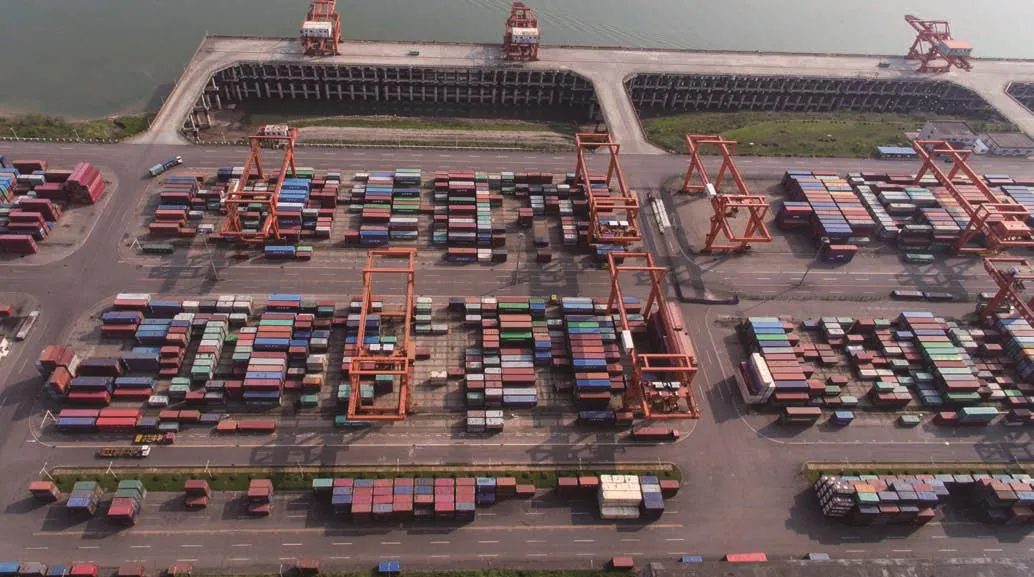Singapore: “Single Window” to Work for Trade Facilitation
2017-12-12WrittenbyLiuYiyingTranslatedbyZhangXiaoyan
Written by Liu Yiying / Translated by Zhang Xiaoyan
Singapore: “Single Window” to Work for Trade Facilitation
Written by Liu Yiying / Translated by Zhang Xiaoyan
With foreign trade being an important part of world economic growth today,“Single Window”, a cross-border trade facilitation system, plays a vital role in promoting trade facilitation and the rise of international trade. Leading the world in such practice, Singapore has employed the model of public platform that can be set as a good example.As the designer and operator of the first international version of “Single Window”, CrimsonLogic is in charge of the planning, building, and operation of“Single Window”, and extensively takes part in foreign trade worldwide. As a result, it has accumulated rich experience and is now having proactive cooperation with China’s Guangxi Zhuang Autonomous Region on promoting the building of “Single Window”.
The 8thlecture of the Beibu Gulf Forum,hosted by China’s Guangxi Office of Beibu Gulf Economic Zone and Cooperation with ASEAN Countries and held recently, invited Chong Kok Keong, Assistant CEO of Singapore’s CrimsonLogic Pte Ltd and CEO of Singapore’s Gets Global Pte Ltd, for giving in-depth interpretation of “Single Window” practices in Singapore and other parts of the world, and the China-ASEAN trade facilitation based on the“Single Window” cooperation between Guangxi and Singapore.
Singapore’s “Single Window” for promoting trade facilitation
Headquartered in Singapore,CrimsonLogic will celebrate its 30thanniversary of founding in 2018, with its 800 employees across the world.According to Chong Kok Keong,launched by the government, Singapore’s“Single Window” building started from the Trade Net operated by CrimsonLogic in 1980s, the first electronic trade customs clearance system nationwide,i.e., the first “Single Window” system ever in the world.
Then how does the Trade Net system work? It connects 35 government agencies of Singapore including customs office, tax authorities, by which all formality with regard to applications,declarations, permits, approvals, and controls in import and export (including intermediary trade) are executed.Running around the clock, the system can automatically receive, process,permit and return the electronic files.The latest version Trade Net 4.0 was put into operation in October 2017, which features streamlining permit structure and optimized processing services.
As Chong Kok Keong pointed out,exempting traders from the complicated procedures of paperwork submission,the Trade Net system combines the multiple agencies to offer one-stop services of custom clearance at single window, which not only saves costs but also raises ef fi ciency. Before the system was in service, each deal of customs clearance usually took 2-7 days but takes 10 minutes only with the system in operation now. Traders can submit application and receive permit within 10 seconds via the Internet. With an annual handling capacity of trade volume of SGD 700 billion, the Trade Net 4.0 can help reduce a trade cost as much as US$1 billion.
The impact of Trade Net has been huge, and with the launch of Singapore Customs Office and other government departments, CrimsonLogic began to build the platform TradeXchange with the Trade Net as the core component, as a national trade and logistics platform of IT, which facilitates information exchanges among business, enterprises and government agencies and immensely enhances the circulation efficiency of goods movement in and out of Singapore.
During the entire operation of“Single Window”, “CrimsonLogic has maintained a positive partnership with the government. CrimsonLogic is concerned about the technological aspect of the work, whereas the government is responsible for implementation of the relevant policies,” said Chong Kok Keong.
The model of “Single Window”practice across the world
Singapore then spread the model of“Single Window” to the whole world.Chong Kok Keong said, “We have established 22 link points globally,and our goal is 50 by 2018.” He also shared three successful cases of “Single Window” outside of Singapore.
The first case is the achievement of direct trade in Saudi Arabia.The country wanted to manage its government agencies by electronic data exchanges so as to promote the trade facilitation. Local traders benefit immensely from the project, which also help boost the ef fi ciency of government and industries, with time of import formality cut by 50% and the economic competitiveness of Saudi Arabia raised,its ranking up 17 places in the World Bank’s Doing Business report.
The second case took place in Botswana, an African country. The trade system of that country could not meet the needs of development and choice had to be made for making changes on the existing system or adopting a new one to enhance the trade development.To this end, CrimsonLogic based its project not only on the demand of the government, but also on the field inspections made in the country to identify the real need of the country,and finally provided a good solution that satis fi es needs of all related parties.
The third case was in India, where CrimsonLogic had to realize the data exchanges amidst 16 sea ports which have individually different demands.“Under such circumstance, we must rely on local partners to eliminate difference with such cooperation, and we also received supports from local governments which helped reduce the flow time among ports,” said Chong Kok Keong. As he pointed out, the success of the above three cases can be attributed to the following points:
First, the project must be forwardlooking and taking everything into consideration. Second, a project of trade facilitation is not merely one of information technology (IT) or one of business flow, but a project of human power which includes a lot of aspects,and the project must detect the real needs of people. Third, trade facilitation is so complicated that it is necessary to adopt international standard for cutting time. Fourth, projects must be carried out in accordance with local conditions,which may call for participation of multiple parties, for example,cooperation of companies.
Despite the achievements made in“Single Window”, China and Guangxi are still late in taking such practice and there is still much experience of Singapore and its practice worldwide they can draw on.
Guangxi working with Singapore for “Single Window”
China’s pilot point of “Single Window”was launched in Shanghai Free Trade Zone in 2014 and with two years of continuous building, the platform of“Single Window” has been established in coastal provinces of the country.In March 2017, it was listed in the national 13thFive-Year Plan to build single window of international trade,which has become the important tool to promote trade facilitation, streamline formality and implement E-commerce on the part of the Chinese government.
With the foreign trade “Single Window” of Guangxi operating online in December 2015, Guangxi becomes the first land in West China with“Single Window” service. The service has become the platform of public information and customs clearance of data exchanges and sharing among port administrative bodies of Guangxi. In accordance with planning, the service will also be expanded and extended at both directions from the existing scope of work, to make a platform of port comprehensive law enforcement and public information service.
In September 2017, China-ASEAN Information Harbor Co. Ltd signedMemorandum of Understanding on Strategic Cooperationwith Singapore’s Gets Global Pte Ltd, which aims to promote the connectivity of foreign trade “Single Windows” of China and ASEAN countries in the form of B2B.And Gets Global Pte Ltd, which is newly founded, has CrimsonLogic as its parent company.
Chong Kok Keong pointed out, “To further promote the ‘Single Window’service of Singapore for China,especially for Guangxi, the best way is the partnership with China-ASEAN Information Harbor Co., Ltd. in Guangxi.” “‘Single Window’ is such a very sophisticated system that calls for the involvement of many more parties than only CrimsonLogic the project owner, especially the participation of local partners and local government,and both sides of the MOU will further promote the project step by step in future, ” he added.

